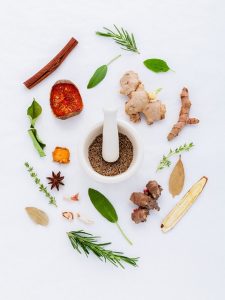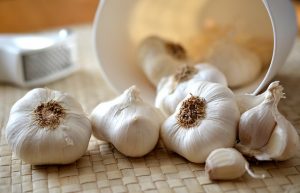Table salt–the most common form of salt–is a combination of sodium and chloride. It’s used to preserve food and enhance flavor. However, it can also contribute to increased blood pressure. Check out these blogs about sodium and how it affects your blood pressure to learn more. There is a wonderful variety of seasonings and flavors you can use instead of salt.
Fresh or dried herbs are full of flavor and are sodium-free.
- Basil
- Cilantro
- Thyme
- Rosemary
- Mint
- Parsley
- Oregano
- Chives
- Sage
Because dried herbs tend to have a stronger flavor than fresh herbs, you need less of them when cooking. You’ll want to use about three times the amount of fresh herbs as dry.
Interested in learning how to grow your own herbs indoors? See how easy it is here. Learn how to revive your wilted fresh herbs so nothing goes to waste.

Spices add tons of flavor!
- Nutmeg
- Cinnamon
- Chilli/cayenne pepper
- Cinnamon
- Paprika
- Turmeric
Can’t forget these favorites that add a unique flavor to any dish.
- Lime zest or lime juice
- Lemon zest or lemon juice
- Pineapple chunks or pineapple juice
- Hot peppers
- Celery
- Ginger
- Garlic
- Balsamic vinegar
- Apple cider vinegar
- Red wine vinegar

Did you know these three flavor boosters have sodium? Try to get the low sodium or reduced-sodium version of the following to reduce your sodium intake. Cheeses that naturally have less sodium include swiss, goat cheese, ricotta, and fresh mozzarella.[1]
- Soy sauce
- Hot sauce
- Cheese
Written by Taylor Newman, Ph.D. Candidate | Edited by Laurel Sanville, MS, RDN, LD
Original photo sources